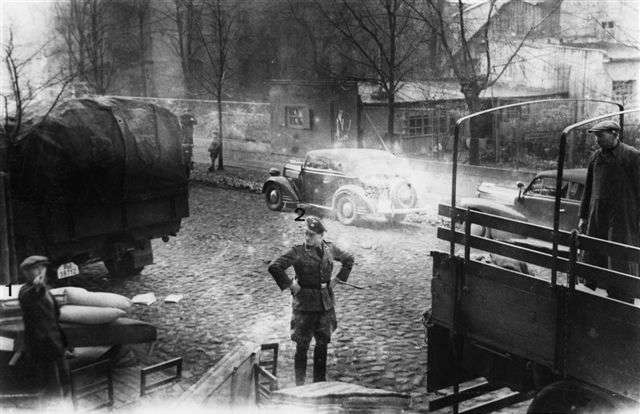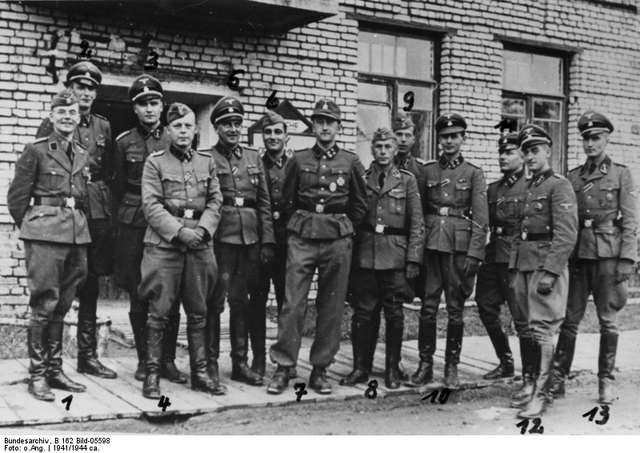The murders of patients in the Occupied Territories
The annihilation of psychiatric patients and nursing home residents had been part of the German war effort since 1939.
With the attack of the German Wehrmacht on Poland on 1 September 1939, the mass murder of people with mental illnesses and disabilities began. German directors of institutions were employed in the Polish institutions; patients were no longer allowed to be discharged. Special units killed thousands of Polish and German psychiatric patients. The SS carried out the first murders in gas chambers. Mobile gas vans, in which the people were killed by carbon monoxide gas, were also used.
The mass murder of the mentally ill likewise followed the German invasion of the Soviet Union in June 1941. In occupied Latvia, SS-Einsatzgruppen, in collaboration with indigenous auxiliary units, murdered approximately 2,500 patients. In Estonia and Lithuania, thousands of patients died mainly by deliberate malnutrition.
The Wehrmacht, task forces of the security police and the security service as well as military and civilian authorities cooperated in the murder of patients in Ukraine, Belarus and Russia. Patients were shot, poisoned, blown up or gassed. The institutions cleared in this way were often used afterwards by the Wehrmacht or the SS.
Overall, at least 40,000 people with mental illnesses and disabilities fell victim to the murders in Poland and the Soviet Union.

© BSTU, MfS HA IX/11, ZUV 9. Bd. 32

© Bundesarchiv-Bildarchiv, B 162 Bild-05598